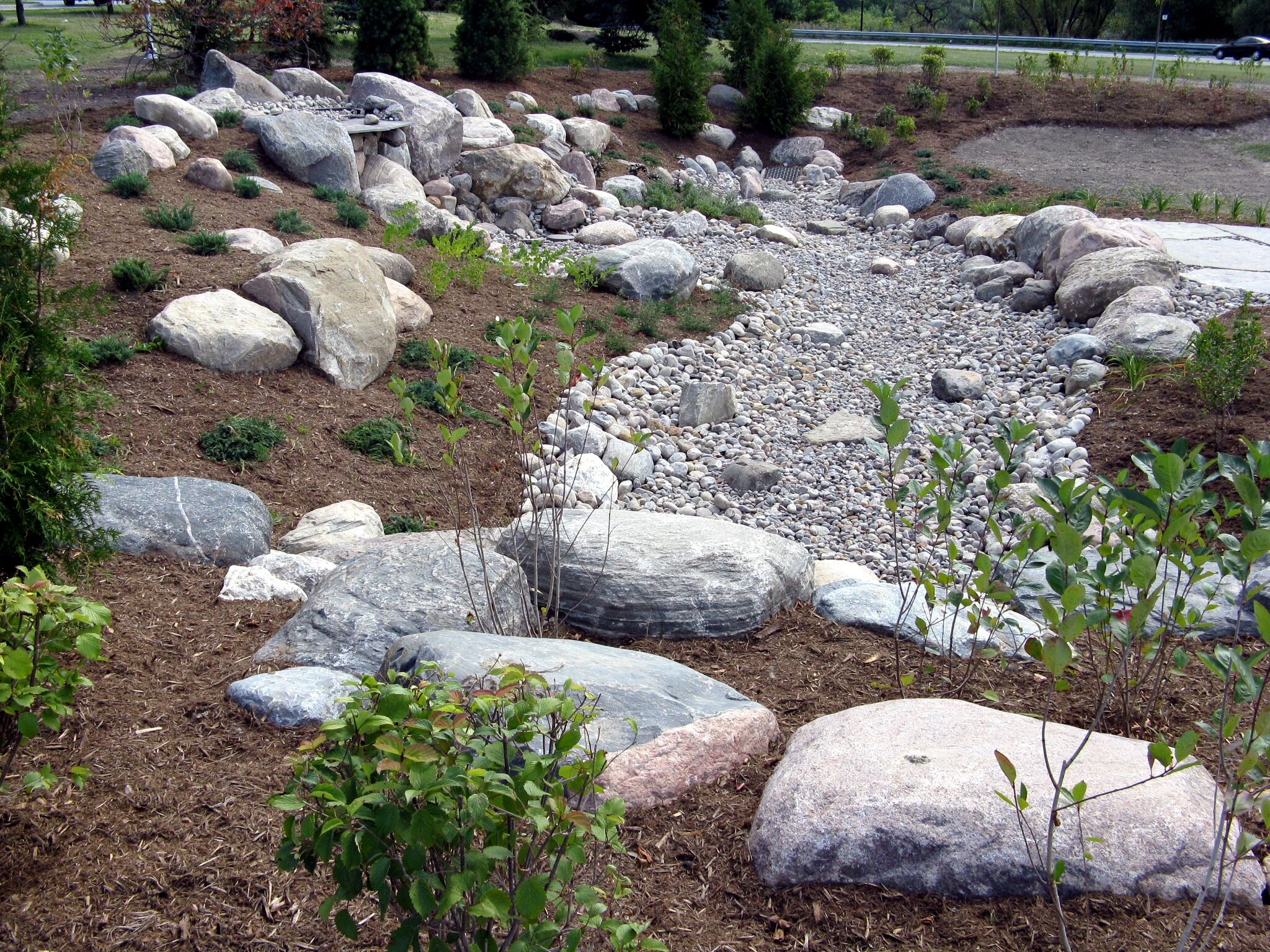Sustainable Stormwater Planning
Urbanization is changing the flow of water resulting from rainstorms and snow melts preventing water from seeping into the ground and back into the water cycle. Instead, water rushes along paved surfaces as runoff to the nearest low point into creeks, streams, rivers and lakes. Repairing flood damages and addressing pollution caused by stormwater and snowmelt runoff can be costly.
Conservation Authorities may provide advice to municipalities with regard to stormwater management. Low Impact Development (LID) is an approach that can be used to protect the natural water balance and water quality of watersheds using a wide range of best management practices that attempt to manage water at the source, allowing water to seep into the ground or evaporate, as well as be collected. It reduces water runoff and keeps water on the land.
LID includes site design, sustainable urban drainage systems, water sensitive urban design, stormwater source controls, stormwater management or green infrastructure practices. LID practices manage rainfall at the source – where it lands through site planning and physical installations that, together, mimic the natural water cycle. It is well-suited for new subdivisions and can be added to older developed areas where stormwater treatment doesn’t exist.
Credit Valley, Lake Simcoe Region and Toronto and Region Conservation Authorities are leaders in Low Impact Development. If you’re a homeowner, landowner, developer, consultant or municipality looking for information, resources or training to help with the implementation of sustainable stormwater planning or practices, please contact your local Conservation Authority.
Conservation Ontario, along with Credit Valley, Lake Simcoe Region and Toronto and Region Conservation Authorities are partners in the Sustainable Technologies Evaluation Program (STEP).
